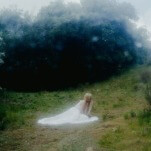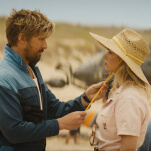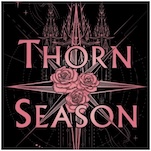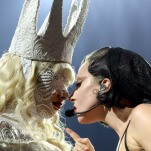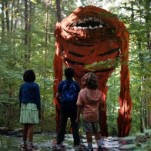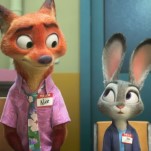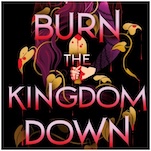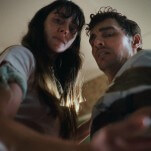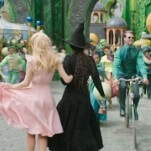Amy Berg on Janis Joplin and the Weight of Living
I sit down with Amy Berg at the Bowery hotel in New York. She orders a whiskey. I order wine. Janis would have ordered whiskey, I thought. Berg has done a few interviews with us at Paste in the past—over the phone. This meeting on a rainy Manhattan Wednesday felt exciting: Berg in the flesh. Not only does it mean getting to listen to her musings on making Janis: Little Girl Blue, but also the opportunity to pair the intellect with the emotion. Like Janis did so well in her music, Berg does so when talking about her film.
The documentary is truly Berg’s passion project. It’s been seven years in the making and opened in limited release this past weekend. Berg is known for directing epic documentaries that tackle equally demanding subjects. There is Deliver Us from Evil about corruption in the Catholic Church, West of Memphis about three young boys wrongfully accused of murder and Prophet’s Prey about controversial Warren Jeffs. Taking on Janis’ story was a different challenge. How does one encapsulate a music legend in under two hours?
As we settle into our chat and Berg opens up about what’s at the core of the documentary, she repeats the last lines of the song “Little Girl Blue.” “I know you’re unhappy, baby/I know just how you feel.” She stops, “To me that’s it. That says it all.” Whether it’s Janis’ voice speaking to you or Berg’s, it’s easy to believe them both. Music and film are fluid, both about communication, about touching a small part of the soul. Luckily, that’s exactly what Berg aims to do. Janis speaks to you the entire 103 minutes—through Joplin’s performances, letters and through interviews with her bandmates and friends: “I know just how you feel.” The film is a true culmination of Berg’s body of work. It listens to its audience, and, genuinely, aims to connect with it. Janis would approve.
Berg’s luggage was lost on her way to New York. She lives in L.A. and is traveling to the city for a short amount of time—enough to panic when your entire wardrobe is lost to United. (I don’t remember if it was United, but that would make sense). She’s been around the world with Janis for the past few months. By Janis, I mean Janis: Little Girl Blue, but at this point, Janis the person and Janis the film seem one and the same. The film premiered at Venice Film Festival back in September. “It’s so flashy and beautiful and cinema-oriented,” Berg describes. “The Italians are going crazy over the movie!” Berg describes the full experience. She sits in box seats, checked the sound that, she explains, “I always turn it up.” And after the screening, there was a six-minute standing ovation.“Women were crying and coming up to me! I didn’t realize the impact it has on women until that moment,” Berg says. “Her music is still as powerful today as it was in 1970.”
As easy as this documentary could have been about chronicling Janis’ life and delivering a tightly biographical view of the singer, it’s more about the sentiment than the story.
“I wanted it to stay emotional because I wanted it to be Janis that carried us through the film.” By focusing on the sentiment, Berg is able to uncover the story.
A crucial element to the film is letters Janis wrote to family, friends and lovers. Berg was able to get acclaimed musician Chan Marshall (Cat Power!!) to read the letters as voiceovers in the film, embodying Janis. “She understands it.” Marshall, like Janis, is from the South, and the Southern sentiment rings true. “She’s a beautiful, vulnerable artist,” Berg says and assures that she did the project with, “so much love.”
Through these private notes, Berg finds the emotional motivation behind Janis as an ambitious icon. “There were so many letters that I had to fine-tune what words ended up in the film. I wanted to isolate the themes to match her trajectory narratively,” Berg explains. Ultimately, Janis wanted to be a winner—even if it was an ambition for love. “I think she really struggled to find balance in her life. She was a people pleaser and was trying to make everyone happy all the time, and she couldn’t make herself happy. That’s still where we are today as women unfortunately. The more we take on, the harder it is to balance life.” Joplin is widely known for being a revolutionary and, on the surface, fearless. Perhaps one of Berg’s most interesting insights in the film is that Janis was in fact full of—and even driven by—fear. Half way through the editing process Berg realized that she really needed to emphasize more Joplin’s fear of failure. Where did this come from?
Berg attributes much of it to Janis’ upbringing. Joplin was born in Port Arthur, Texas, to Dorothy, a registrar at a business college and Seth, an engineer at Texaco. The film illustrates how Janis’ conservative childhood left her an outcast at school and often misunderstood by her parents. In the Joplin household “they were taught not to feel and to be better,” Berg explains. Joplin did embrace the art and literature that her parents encouraged. “She was just a ground breaker from the beginning. She was a provocateur.” This is where the conflict arose—traditional Texas upbringing coupled with an affinity for evolution. Berg found similarities between Damien Echols from her film West of Memphis and Janis. They were “always trying to push things to a point to get a response. They’re very brilliant people who wanted to try and challenge the way a very conservative community was acting.” As much as Janis wanted to change the world, she also wanted to prove to her parents that she wouldn’t fail in doing so. The first time Janis set out for San Francisco, she returned broken-hearted and a drug addict. “Her career became about proving to her parents that she was okay,” Berg explains.
Much of this insight shines through the letters but also in archival footage of Janis in concert. Berg lets these clips play just long enough to make you think, Wait, am I going to get to watch the entire concert?, and then just as soon as the thought enters your head, you’re swept back up into Janis’ performance. These clips possess more than entertainment value. If you relax into them, there’s something you maybe couldn’t have seen at a live concert, a close-ness only film can provide: you see that fear Berg describes. Up close, Janis is sexy, strong and formidable, sure, but also incredibly vulnerable and tender.
She embarrassed her parents, something that caused her a lot of pain. When asking Berg what exactly was embarrassing about her, she replies assured, “She wasn’t being a lady.” Joni Mitchell was singing with her “beautiful whiskey voice about ethereal things. Janis was screaming and wanting to have sex with everybody.” But Janis wasn’t just about rebelling, it was rooted in a question we find is at the center of feminist arguments today: “If men can do this, why can’t I do this?”
The film digs just as much in to the roots of Janis’ fear as the mechanisms she used to cope with it. A lot of this had to do with men. “The male validation came from the family unit idea. I think that she wanted to be loved and respected and viewed as sexy, but she was healing her wounds in a way that wasn’t really working.” Berg spoke with a number of men in Janis’ life, from Dick Cavett to Clive Davis to her most serious boyfriend, David Dalton. They all noticed that Janis “always wanted the young pretty boys, but she didn’t understand that they couldn’t understand her,” Berg says. “She was misguided in that way.”
-

-

-

-

-

-

-

-

-

-

-

-

-

-

-

-

-

-

-

-

-

-

-

-

-

-

-

-

-

-

-

-

-

-

-

-

-

-

-

-

